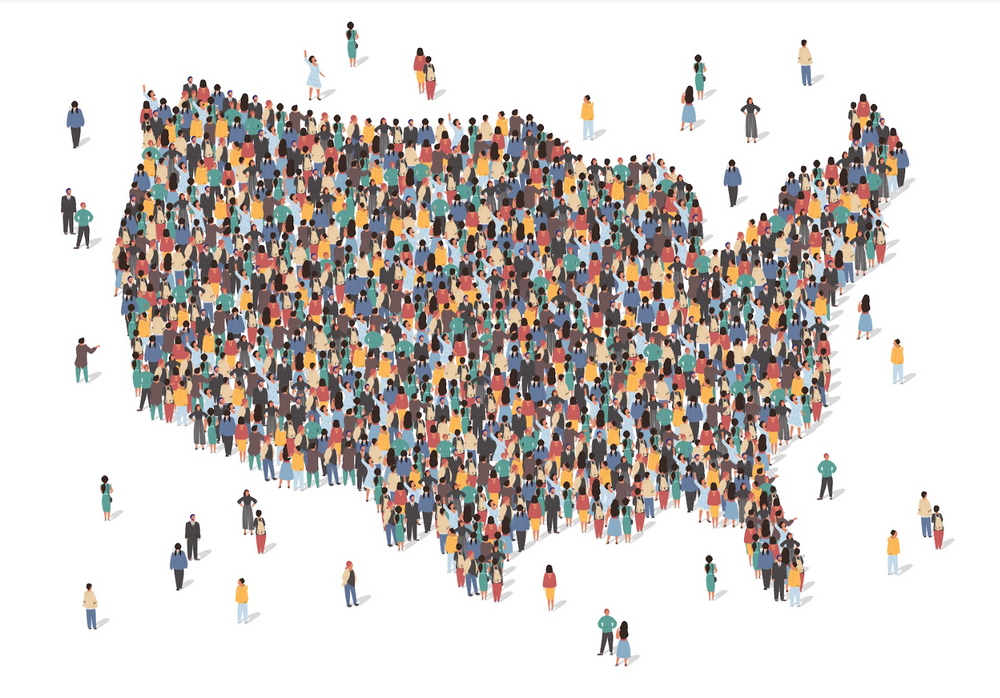Correcting Myths About Immigration
American Indian and Alaska Natives make up just 2.9% of the United States population according to the most recent census. Meaning, the remaining 97.1% of the population are immigrants or descendants of immigrants. In fact, the United States is often referred to as a “nation of immigrants,” a country shaped by people who left their homes in search of better living conditions and greater opportunities.
Large numbers of immigrants continue to make their way to the United States each year, with approximately 2.8 million immigrants in the 2024 fiscal year. In recent years, the top countries of origin for immigrants include Mexico, India, China, and the Philippines. However, immigration from Mexico has slowed since 2007 and the Mexican-born population in the U.S. has dropped. The Mexican share of the U.S. immigrant population dropped from 29% in 2010 to 23% in 2022.
The United States is, and always has been, seen as a place people come to fulfill their dreams: professional, educational, financial, personal, and familial. It continues to be the top country people immigrate to, with 47.8 million foreign-born residents in 2023. Many United States citizens recognize the benefits of immigration – greater innovation, richer culture, increased economic output – but there remain many misconceptions about immigrants.
Misconception 1: The majority of immigrants come to the U.S. illegally.
This could not be farther from the truth. According to the Pew Research Center, 77% of U.S. immigrants are lawful immigrants, meaning they are either naturalized citizens, lawful permanent residents, or temporary lawful residents. However, many Americans (28% according to a Gallup poll) consider immigration and undocumented migrants to be the top problem facing the country today.
Misconception 2: Immigrants are not well educated.
According to Pew, more than a third of adult immigrants have a college degree and another 18% have attended college classes. Only 25% had less than a high school diploma.
Misconception 3: Immigrants don’t work hard.
Immigrants are drivers of local economies as they launch roughly one in five new businesses, while only making up 14% of the population. They are disproportionately entrepreneurial. They also contribute to vital industries such as agriculture, construction, and healthcare.
Misconception 4: Immigrants take jobs from U.S.-born residents.
As mentioned in the point above, immigrants create new businesses. New businesses mean new jobs. They also spend their money on, and increase demand for, U.S. goods and services, pay taxes, and increase productivity of existing U.S. businesses. The rhetoric of immigrants stealing U.S. jobs is based on the fallacy that there are a fixed number of jobs in the U.S. However, new jobs are created every day, even in fields that didn’t exist a decade ago. The diverse backgrounds and experiences of immigrants feeds the innovation that drives this growth.
The reality is that immigration is good for the country. Immigration helps counteract slowing population growth and adds $2 trillion to the U.S. GDP annually. In fact, we need immigration to stay competitive within the global landscape. We invite you to learn more about U.S. immigration throughout Immigrant Heritage Month, so that you are equipped to correct any misconceptions that you encounter. We all need to do our part to advocate for the people and policies that make our country great.

Kaela Sosa, CDE, is Curriculum and Programming Manager at The Diversity Movement as well as one of its founding members. With a degree in Psychology and Gender Studies, Kaela has fought for the visibility and acknowledgement of issues pertaining to underrepresented groups for nearly a decade. Connect with her on Linkedin.




